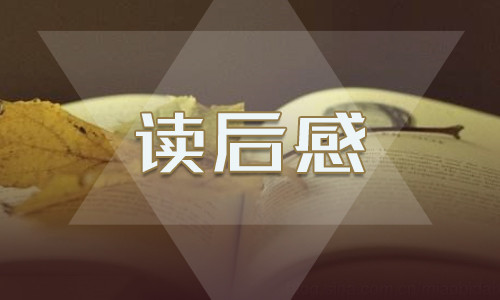Economics of Money, Banking, and Financial Markets, 11e, Global Edition (Mishkin) Chapter 26 Transmission Mechanisms of Monetary Policy
26.1 Transmission Mechanism of Monetary Policy
1) Economic theory suggests that ________ interest rates are ________ important than ________ interest rates in explaining investment behavior. A) nominal; more; real B) real; less; nominal C) real; more; nominal D) market; more; real Answer: C
AACSB: Reflective Thinking
2) According to the traditional interest-rate channel, expansionary monetary policy lowers the real interest rate, thereby raising expenditure on A) business fixed investment. B) government expenditure. C) consumer nondurables. D) net exports. Answer: A
AACSB: Reflective Thinking
3) The monetary transmission mechanism that links monetary policy to GDP through real interest rates and investment spending is called the A) traditional interest-rate channel. B) Tobins' q theory. C) wealth effects. D) cash flow channel. Answer: A
AACSB: Reflective Thinking
4) If the aggregate price level adjusts slowly over time, then an expansionary monetary policy lowers
A) only the short-term nominal interest rate. B) only the short-term real interest rate.
C) both the short-term nominal and real interest rates.
D) the short-term nominal, the short-term real, and the long-term real interest rates. Answer: D
AACSB: Reflective Thinking
5) If monetary policy can influence ________ prices and conditions in ________ markets, then it can affect spending through channels other than the traditional interest-rate channel. A) asset; labor B) asset; credit
C) commodity; labor D) commodity; credit Answer: B
AACSB: Reflective Thinking
6) An expansionary monetary policy lowers the real interest rate, causing the domestic currency to ________, thereby ________ net exports. A) appreciate; raising B) appreciate; lowering C) depreciate; raising D) depreciate; lowering Answer: C
AACSB: Analytical Thinking
7) An expansionary monetary policy increases net exports by ________ interest rates and ________ the value of the dollar. A) lowering nominal; decreasing B) lowering real; decreasing C) raising nominal; increasing D) raising real; increasing Answer: B
AACSB: Analytical Thinking
8) A contractionary monetary policy raises the real interest rate, causing the domestic currency to ________, thereby ________ net exports. A) appreciate; raising B) appreciate; lowering C) depreciate; raising D) depreciate; lowering Answer: B
AACSB: Analytical Thinking
9) A contractionary monetary policy decreases net exports by ________ interest rates and ________ the value of the dollar. A) lowering real; decreasing B) lowering real; increasing C) raising nominal; increasing D) raising real; increasing Answer: D
AACSB: Analytical Thinking
10) Tobin's q is defined as the market value of firms ________ the replacement cost of capital. A) times B) minus C) plus
D) divided by Answer: D
AACSB: Reflective Thinking
11) Tobin's q theory suggests that monetary policy may affect investment spending through its impact on
A) stock prices. B) interest rates. C) bond prices. D) cash flow. Answer: A
AACSB: Reflective Thinking
12) In the late 1990s, the stock market bubble ________ the value of Tobin's q, and caused ________ in business equipment. A) increased; underinvestment B) increased; overinvestment C) decreased; underinvestment D) decreased; overinvestment Answer: B
AACSB: Reflective Thinking
13) During the Great Depression, Tobin's q A) rose dramatically, as did real interest rates. B) fell to unprecedentedly low levels.
C) stayed fairly constant, in contrast to most other economic measures. D) rose only slightly, in spite of Hoover's attempts to prop it up. Answer: B
AACSB: Reflective Thinking
14) According to Tobin's q theory, ________ policy can affect ________ spending through its effect on the prices of common stock. A) fiscal; consumption B) fiscal; investment
C) monetary; consumption D) monetary; investment Answer: D
AACSB: Reflective Thinking
15) According to Tobin's q theory, when q is ________, firms will not purchase new investment goods because the market value of firms is ________ relative to the cost of capital. A) low; low B) low; high C) high; low D) high; high Answer: A
AACSB: Analytical Thinking
16) According to Tobin's q theory, if q is ________, new plant and equipment capital is ________ relative to the market value of business firms, so companies can buy a lot of new investment goods with only a ________ issue of stock. A) high; dear; large B) high; cheap; large C) high; cheap; small D) low; cheap; large E) low; cheap; small Answer: C
AACSB: Reflective Thinking
17) According to Tobin's q theory, when equity prices are low the market price of existing capital is ________ relative to new capital, so expenditure on fixed investment is ________. A) cheap; low B) dear; low C) cheap; high D) dear; high Answer: A
AACSB: Reflective Thinking
18) According to Tobin's q theory, when equity prices are high the market price of existing capital is ________ relative to new capital, so expenditure on fixed investment is ________. A) cheap; low B) dear; low C) cheap; high D) dear; high Answer: D
AACSB: Analytical Thinking
19) Franco Modigliani has found that an expansionary monetary policy can cause stock market prices to ________ and consumption to ________. A) increase; increase B) increase; decrease C) decrease; decrease D) decrease; increase Answer: A
AACSB: Reflective Thinking
20) Since Regulation Q has been abolished, there have been doubts raised about the size of the effect of the ________ channel.
A) balance sheet B) bank lending C) cash flow
D) unanticipated price level Answer: B
AACSB: Reflective Thinking
21) A rise in stock prices ________ the net worth of firms and so leads to ________ investment spending because of the reduction in moral hazard. A) raises; higher B) raises; lower C) reduces; higher D) reduces; lower Answer: A
AACSB: Reflective Thinking
22) Because of the presence of asymmetric information problems in credit markets, an
expansionary monetary policy causes a ________ in net worth, which ________ the adverse selection problem, thereby ________ increased lending to finance investment spending. A) decline; increases; encouraging B) rise; increases; discouraging C) rise; reduces; encouraging D) decline; reduces; discouraging Answer: C
AACSB: Reflective Thinking
23) Due to asymmetric information in credit markets, monetary policy may affect economic activity through the balance sheet channel, where an increase in the money supply
A) raises stock prices, lowering the cost of new capital relative to firms' market value, thus increasing investment spending.
B) raises firms' net worth, decreasing adverse selection and moral hazard problems, thus increasing banks' willingness to lend to finance investment spending.
C) raises the level of bank reserves, deposits, and bank loans, thereby raising spending by those individuals who do not have access to credit markets.
D) lowers the value of the dollar, increasing net exports and aggregate demand. Answer: B
AACSB: Reflective Thinking
24) An expansionary monetary policy raises firms' cash flows by ________ interest rates. A) lowering real B) lowering nominal C) raising real D) raising nominal Answer: B
AACSB: Reflective Thinking
25) If a contractionary monetary policy lowers the price level by more than expected, it raises the real value of consumer debt. This reduces consumer expenditure through A) the bank lending channel.





